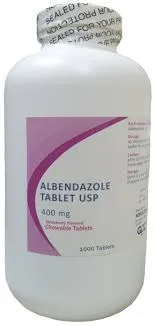- Afrikaans
- Albanian
- Amharic
- Arabic
- Armenian
- Azerbaijani
- Basque
- Belarusian
- Bengali
- Bosnian
- Bulgarian
- Catalan
- Cebuano
- Corsican
- Croatian
- Czech
- Danish
- Dutch
- English
- Esperanto
- Estonian
- Finnish
- French
- Frisian
- Galician
- Georgian
- German
- Greek
- Gujarati
- Haitian Creole
- hausa
- hawaiian
- Hebrew
- Hindi
- Miao
- Hungarian
- Icelandic
- igbo
- Indonesian
- irish
- Italian
- Japanese
- Javanese
- Kannada
- kazakh
- Khmer
- Rwandese
- Korean
- Kurdish
- Kyrgyz
- Lao
- Latin
- Latvian
- Lithuanian
- Luxembourgish
- Macedonian
- Malgashi
- Malay
- Malayalam
- Maltese
- Maori
- Marathi
- Mongolian
- Myanmar
- Nepali
- Norwegian
- Norwegian
- Occitan
- Pashto
- Persian
- Polish
- Portuguese
- Punjabi
- Romanian
- Russian
- Samoan
- Scottish Gaelic
- Serbian
- Sesotho
- Shona
- Sindhi
- Sinhala
- Slovak
- Slovenian
- Somali
- Spanish
- Sundanese
- Swahili
- Swedish
- Tagalog
- Tajik
- Tamil
- Tatar
- Telugu
- Thai
- Turkish
- Turkmen
- Ukrainian
- Urdu
- Uighur
- Uzbek
- Vietnamese
- Welsh
- Bantu
- Yiddish
- Yoruba
- Zulu
നവം . 19, 2024 22:59 Back to list
Research on the Efficacy of Oxytetracycline for Injection in Veterinary Medicine
Oxytetracycline LA Injection An Overview
Oxytetracycline, a broad-spectrum antibiotic, belongs to the tetracycline class of antibiotics. Its effectiveness against a wide range of gram-positive and gram-negative bacteria has made it an invaluable tool in veterinary medicine and agriculture. One of the most prominent formulations of this antibiotic is the long-acting (LA) injection, which provides prolonged therapeutic effects, making it particularly useful in treating various infections in animals.
Pharmacology and Mechanism of Action
Oxytetracycline works by inhibiting bacterial protein synthesis. It achieves this by binding to the 30S ribosomal subunit of bacteria, preventing the attachment of aminoacyl-tRNA to the mRNA-ribosome complex. This action halts the growth and replication of bacteria, making it effective in treating infections caused by susceptible organisms. The long-acting formulation of oxytetracycline is designed to maintain therapeutic levels in the bloodstream for an extended period, allowing for less frequent dosing and ultimately improving compliance in veterinary practices.
Indications for Use
Oxytetracycline LA injection is commonly used in veterinary medicine for the treatment of bacterial infections in various animal species, including cattle, swine, and poultry. Some of the primary indications include
1. Respiratory Infections It is effective against pathogens such as Mycoplasma, Pasteurella, and Actinobacillus, which are responsible for respiratory diseases in livestock. 2. Skin and Soft Tissue Infections Oxytetracycline is also utilized for treating skin infections and conditions resulting from bites or injuries.
oxytetracycline la injection

4. Systemic Infections It has applications in treating systemic infections caused by bacteria that are sensitive to oxytetracycline.
5. Prophylactic use In some cases, it may be administered preventively in at-risk populations.
Dosage and Administration
The dosing of oxytetracycline LA injection can vary depending on the specific condition being treated, the species of the animal, and the severity of the infection. Veterinary professionals typically determine the appropriate dose based on these factors. Generally, the injection is administered intramuscularly or subcutaneously, and its long-acting formulation allows for administration every 3 to 7 days, depending on the established veterinary protocols.
Side Effects and Considerations
While oxytetracycline LA injection is generally well-tolerated, some side effects may occur. These can include localized reactions at the injection site, such as swelling or pain, and, in rare cases, systemic allergic reactions. It is essential for veterinarians to monitor animals for any adverse effects following treatment. Additionally, excessive or inappropriate use can lead to the development of antibiotic resistance, which poses a significant threat to both animal and public health. Therefore, oxytetracycline should only be used when prescribed by a qualified veterinarian who has assessed the specific needs and conditions of the animal.
Conclusion
Oxytetracycline LA injection remains an essential tool in veterinary medicine for treating a variety of bacterial infections. Its broad-spectrum activity, convenience of administration, and prolonged action make it a preferred choice for veterinarians dealing with serious infections in livestock. However, responsible use is crucial to prevent antibiotic resistance and ensure the effectiveness of this valuable medication for future generations of animals. As research continues to evolve in veterinary pharmacotherapy, oxytetracycline is likely to remain a foundational antibiotic in the fight against infectious diseases in animals.
-
Guide to Oxytetracycline Injection
NewsMar.27,2025
-
Guide to Colistin Sulphate
NewsMar.27,2025
-
Gentamicin Sulfate: Uses, Price, And Key Information
NewsMar.27,2025
-
Enrofloxacin Injection: Uses, Price, And Supplier Information
NewsMar.27,2025
-
Dexamethasone Sodium Phosphate Injection: Uses, Price, And Key Information
NewsMar.27,2025
-
Albendazole Tablet: Uses, Dosage, Cost, And Key Information
NewsMar.27,2025













